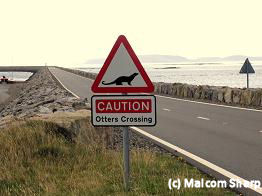 |
Last Update:
Tuesday January 21, 2014 |
| • [Home] | [Site Map] | [Contact Us]• | |
| [OSG Home] | [OM Home] |
| [Causes] | [Mitigation] | [Biblio] | [Post Mortem] | [Research map] |
|
By country
|
 Reducing human-induced mortality is key to improve the survival of otter populations around the world, especially for those populations that are below carrying capacity. Reporting, collecting and analysing otters that are found dead is one of the ways in which we can help reduce human-induced mortality. Data on dead otters are valuable as they can give information on many aspects of otter biology and ecology and can also provide invaluable information on the health status of otter populations. Dead otter specimens are often preserved in institutions and they can be a source of samples for genetic and other kinds of analyses. A review presented at the European Otter Workshop in 2008 highlighted that, at least in Europe, there is a great variability both between and within countries in the way in which dead otters are reported, collected, and examined. In order to raise awareness and improve the recovery systems in each country at EOW08 it was decided that a platform for storing and exchanging information was needed. This web site is the result of this proposition. The web site is in its infancy and for it to be useful it needs to report as much information as possible. In particular we need:
|
||||


:: Can you help? We still need to collect a lot of information for this site to be a useful resource. If you would like to contribute please contact us. You can also download a form which lists all the information needed and then send it to us via e-mail, 

|
|||||
| [Copyright © 2006-2011 IUCN OSG] | [Home] | [Site Map] | [Contact Us] |